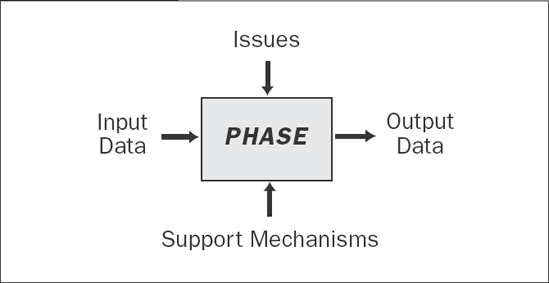4.3. Life-Cycle Overview
The duration of the Knowledge Management life cycle is a function of the availability of the technologies that enable each phase and of the nature of the information, the difficulty of archiving the information, and other external factors. For example, some business information, such as tax information, must be retained or archived indefinitely to comply with federal, state, or local law. Other information may be critical to maintaining the value of the corporation, such as knowledge of core processes in the company.
As illustrated in Exhibit 4.1, each phase of the KM life cycle is associated with issues, input data, support mechanisms, and output data. The difference between the input and output data depends on the processes involved in the particular phase of the KM life cycle. For example, in the archiving process, the output data are indexed according to a standard or controlled vocabulary, whereas in the translation phase, the format of the information is converted to a more useful form.
EXHIBIT 4.1. EXHIBIT 4.1

Get Essentials of Knowledge Management now with the O’Reilly learning platform.
O’Reilly members experience books, live events, courses curated by job role, and more from O’Reilly and nearly 200 top publishers.

